Whatever Became of 56 Signers? (Part 9)
(Part 9 in a series that begins here; a YES following the entry means the signer owned slaves; NO means he did not own slaves.)
…We mutually pledge to each other our Lives, our Fortunes , and our Sacred Honor.
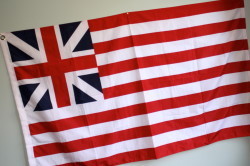
The Grand Flag of the Union, first raised in 1775 and by George Washington in early 1776 in Boston. The Stars and Stripes did not become the “American flag” until June 14, 1777. (Author photo © Kenneth C. Davis)
Betsy Ross’s uncle. The “first psychiatrist.” Youngest signer. The Great Compromiser. An Irish man named Smith. The next five signers:
-George Ross (Pennsylvania) The son of a Scottish-born minister, he was a 46 year old attorney at the signing, a loyalist before turning to the patriot cause in 1775. Yes, he was Betsy’s uncle, but the rest of the Ross flag story has been dismissed as family legend. He left Congress in early 1777 due to illness — the same severe gout that afflicted a number of signers– and served as a Pennsylvania judge before his death in 1779 at 49, following a severe attack of gout. NO
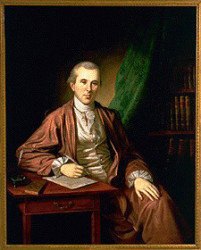
Dr Benjamin Rush by Charles Willson Peale c. 1783. Winterthur Museum
-Benjamin Rush (Pennsylvania) Raised by a widowed mother, he was a 30 year old physician at the signing, youngest in the Pennsylvania delegation. He was elected after the July vote and his diaries, letters and notes provided some of the best portraits of many of the signers and other founders. He served as surgeon general of the armies during the war, and became an early abolitionist while still owning a slave himself. Rush was an early advocate of many modern medical practices, while at the same time practicing bloodletting. He established the first free medical clinic and remained in Philadelphia during a yellow fever epidemic, spoke against capital punishment and for the idea that there was mental illness which led to his being called “The Father of American Psychiatry.” He died of typhus in 1813 at age 67. YES
-Edward Rutledge (South Carolina) Son of an Irish immigrant physician, he was a 26 year old attorney at the signing, the youngest of the signers. Rutledge later left Congress and was captured by the British when Charleston fell in May 1780 and was held for nearly a year. After the war, his finances and businesses flourished and he returned to state politics, and was elected governor of South Carolina, but died at 50 in 1800, before his term ended. YES
-Roger Sherman (Connecticut) A self-educated son of a farmer, he was a prosperous merchant, attorney and politician, aged 55 at the signing. He would sign three of the central documents in America’s foundation: the Declaration (he was a member of the draft committee), the Articles of Confederation, and the U.S. Constitution. It was at the 1787 convention that Sherman proposed the “Great Compromise” that ended the deadlock between large and small states. He was also a true “Founding Father”–after Carroll (18 children) and Ellery (16 children), Sherman fathered the third most children among the signers -15. A leading Federalist, he served in the House and Senate, where he was serving at his death in 1793 at age 72. NO
-James Smith (Pennsylvania) Another immigrant signer, he was born in Ireland and was around 57 at the signing, another self-taught attorney. Elected to Congress after the July vote, he signed the Declaration. He returned to law practice and state offices before his death in 1806 at about age 87. NO
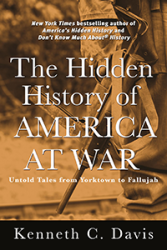
The Hidden History of America At War-May 5, 2015 (Hachette Books/Random House Audio)
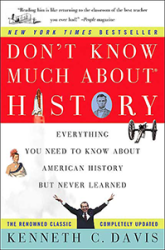
Don’t Know Much About® History: Anniversary Edition (Harper Perennial and Random House Audio)
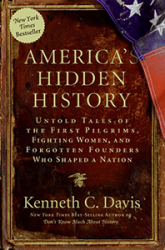
America’s Hidden History, includes tales of “Forgotten Founders”



